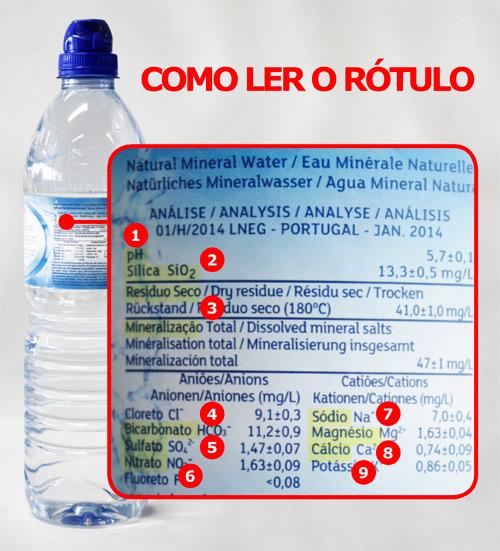
Water legislation
The composition of a natural water is determined by the presence of:
> Macro-elements or major elements;
> micro-elements or trace elements.
- major elements can be divided in turn into main cations and anions and are represented respectively by Soccer, Magnesium, Sodium e Potassium and Bicarbonates, Chlorides and Sulphates. In particular, in mineral waters they can be added with relevant concentrations to the main cations, H + ions (acidic waters) and to the main anions, OH- ions (basic waters).
The parameters to be checked, the methods and frequencies of analysis of mineral waters are defined by various regulatory measures, the last of which, the Decree 29/12/2003, has implemented the provisions of the Community Directive 2003/40 / EC, which imposes more restrictive limits on producers of some components of mineral water, especially with regard to those substances that can be dangerous to health.
With regard to substances, the DM has finally identified groups of substances or single ones substances not allowed (substances clearly associated with anthropogenic pollution such as pesticides, hydrocarbons etc.) thus guaranteeing excellent quality characteristics also for mineral waters.
Natural waters: types and labeling
They are considered natural mineral waters waters which, originating from an underground aquifer or reservoir, come from one or more natural or perforated springs and which have particular hygienic characteristics and, possibly, properties favorable to health.
Current legislation establishes that natural mineral waters are distinguished from ordinary drinking waters for their original purity and its conservation, for the content of minerals, trace elements and / or other constituents and, possibly, for some of their effects, and for this reason they must be kept protected from possible sources of pollution.
Certain indications must be given on labels or containers of natural mineral waters, including:
> Legal name "natural mineral water" (totally or partially degassed, reinforced with source gas, etc.);
> name of the source and place of use of the same;
> indication of the analytical composition;
> date on which the analyzes were performed;
> information about any permitted treatments.
Furthermore the therapeutic properties of the water may be reported on the labels or containers of natural mineral waters, such as: “may have diuretic effects” or “indicated for infant feeding”.
Generally speaking, mineral waters can be classified according to the mineral salt content identified by the wording "fixed residue":
> Minimally mineralized waters: fixed residue <50 mg / l;
> water with low mineral content: fixed residue <200 mg / l;
> medium-mineral waters: fixed residue between 200 and 1000 mg / l;
> mineral waters: fixed residue> 1000 mg / l;
> medium-mineral waters: fixed residue between 500 and 1500 mg / l;
> waters rich in mineral salts: fixed residue> 1500mg / l.
A further classification is done on the basis of saline composition:
> Bicarbonate: bicarbonate content> 600mg / l
> Sulphate: sulphate content> 200mg / l
> Chlorinated: chloride content> 200 mg / l
> Florurata: fluorine content> 1mg / l
> Ferruginous: tenore divalent iron < 1mg/l
> Magnesium: magnesium content> 50 mg / l
> Sodium: sodium content> 200 mg / l (waters with sodium content <20mg / l are suitable for low sodium diets).
The latter classification is useful for categorizing water consumption according to categories of problems: for digestive difficulties it is better to choose bicarbonate, sulphate, effervescent waters; for osteoporosis, on the other hand, calcic ones and so on.
The fixed residue of water
With "fixed residue" we mean what remains after the complete evaporation of a liter of water at 180 ° C.
The number on the label represents the weight of all minerals left on the bottom after this operation.
The lower the number, the lighter the water and vice versa. It is often believed that mineral water is better the lighter it is, but that's not true: it depends on the consumer's needs to choose their type of water.
For example, it will be preferable to use water with a low fixed residue against kidney stones, while it will be advisable to use a water richer in mineral salts and, therefore, with a higher fixed residue, when it is necessary to restore minerals after intense sweating.
For the choice of the type of water it is good to rely on the advice of the doctor, especially when you suffer from conditions such as hypertension or kidney problems.
Some practical tips in water conservation
A poor water conservation it can damage the properties of natural mineral water.
It is therefore useful to adopt some precautions such as:
> Always keep bottles of natural mineral water away from light, sun and any heat sources, favoring cool, dry and odor-free places;
> close the bottles well, once they have been opened, to keep the original characteristics of the natural mineral water intact;
> avoid using ice which, on the one hand, alters the taste of the water and, on the other, contaminates its original purity;
The therapeutic power of good water should not be underestimated natural and it is good to ask the attending physician or nutritionist for information to find out which water best suits your physio-pathological needs.


























